LiveUSB Graphics image with OpenBSD - carry your graphics packages on a memory stick
What is LiveUSB-Graphics?
It is trivial to a create a bootable USB stick with OpenBSD. I wanted to create one and realized that this will be of general use for anyone who likes a UNIX USB memory stick that they can carry with them on a keychain. This creation focuses on graphics application like xv, xpaint and inkscape.
You can now purchase a preloaded LiveUSB flashdrive from
 for just 49.95$
for just 49.95$
If you wish to have LiveCD/LiveDVD instead, please refer to our other LiveCD-Graphics project on sourceforge!
This USB image shall not touch your hard disk in any way. All the operations are done in the USB stick and main memory. Nothing will be written to your MBR or boot loaders!
Please make your choice, download and enjoy!
Quick Download links
How to create your own LiveUSB Graphics with OpenBSD?
Really easy. Watch out. Everything is done with qemu by Fabrice Bellard. Just install that package and blindly follow the instructions below.
# qemu-img create liveusb-graphics.img 15625000k
# qemu-system-i386 -hda liveusb-graphics.img -cdrom install54.iso
That is it! You are ready to dd(1) now. See below.
Creating a LiveCD is more work because you need a read only OS. No such issue with writeable USB memory sticks.
You can login as user live and password live123 The root password is openbsd1729.
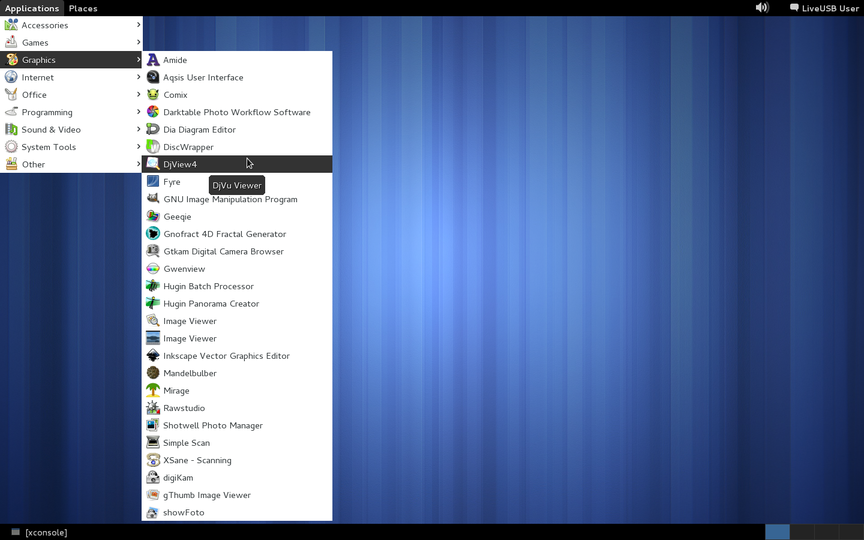
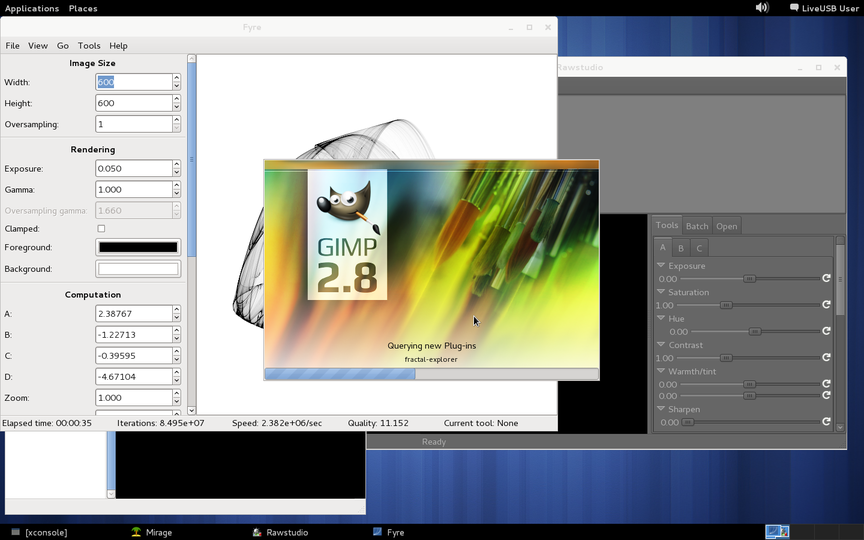
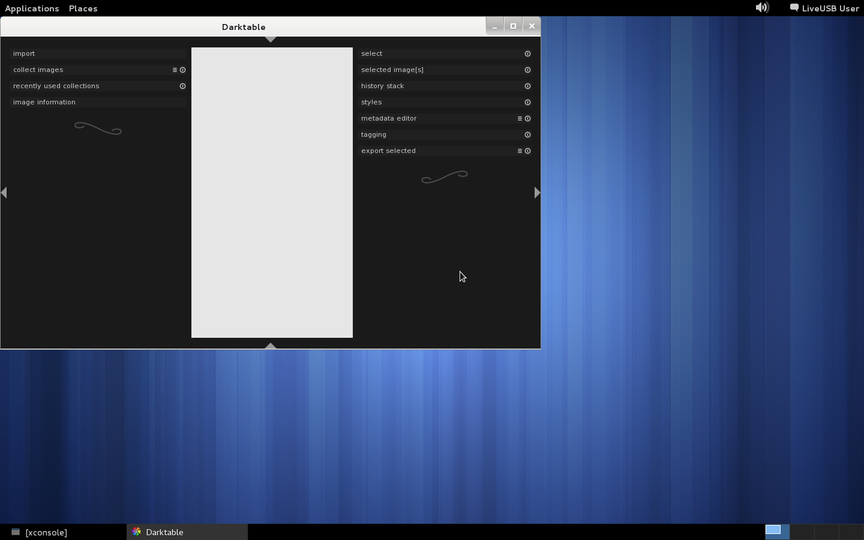
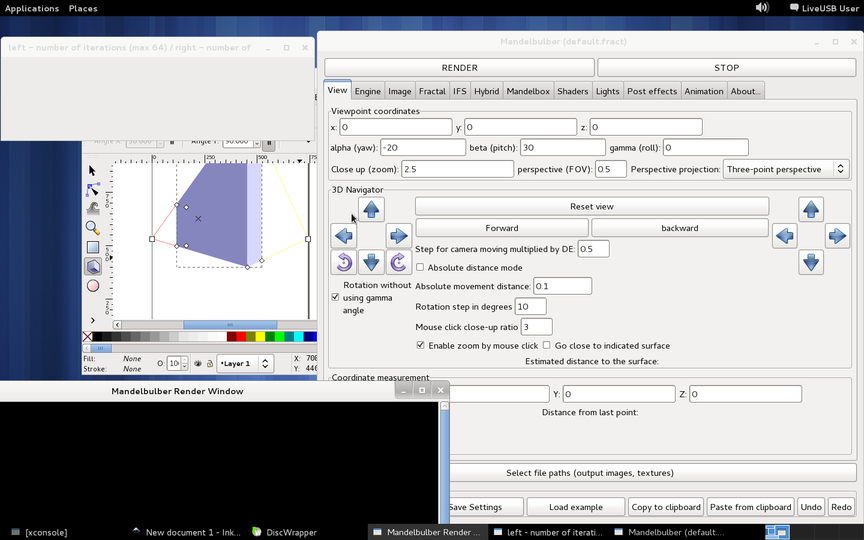
These LiveUSB images are based on 5.4 release of OpenBSD made on November 1, 2013.
The following packages are installed.
DevIL-1.7.8p6 library for powerful image loading capabilities GraphicsMagick-1.3.18 image processing tools with stable ABI ImageMagick-6.7.7.7p2 image processing tools aalib-1.4p5 ascii art library abiword-2.8.6p7 free cross-platform WYSIWYG word processor agg-2.5p4 anti-grain geometry graphics library amide-0.9.2p16 Amide a Medical Imaging Data Examiner animorph-0.3p0 morphing engine aqsis-1.8.2p0 photorealistic 3D rendering solution argyll-1.1.0.20100201p2 ICC compatible color management system bruce-1.2.1p4 Python-based presentation tool cadubi-1.3p0 ASCII drawing utility cairo-1.12.14p0 vector graphics library cairomm-1.10.0p1 C++ interface for cairo cal3d-0.11.0p0 skeletal based character animation library calcurse-2.9.2v0 text-based calendar and scheduling application cfdg-2.2.2 Context Free Design Grammar clutter-1.14.4p0 OpenGL-based interactive canvas library colord-1.0.0 device color profile management daemon colorls-5.3 ls that can use color to display file attributes comix-4.0.4 gtk2 comic book viewer ctl-1.4.1p0 Color Transformation Language interpreter curl-7.26.0p3 get files from FTP, Gopher, HTTP or HTTPS servers darktable-1.2.2p0 virtual lighttable and darkroom for photographers dcmtk-3.5.4p1 DICOM toolkit dcraw-9.17 digital camera RAW format conversion tool devtodo-0.1.20p1 reminder/task program aimed at developers dia-0.97.2p7 technical diagrams drawing tool digikam-0.9.6p9 digital image kde application digikam-doc-0.9.3p0 documentation for digikam discwrapper-1.2.2p0 disc cover designer djview4-4.9 portable DjVu viewer and browser plugin djvulibre-3.5.25.3p0 view, decode and encode DjVu files dpic-2011.12.09 pic-like interpreter for producing line graphics dumpmpeg-0.6p1 dump frames from mpeg-1 movies enblend-enfuse-4.0p3 blend seams in panoramic image mosaics enjoympeg-0.4.1p1 mpeg-1 video player entomologist-0.6p4 bug tracker client exiftran-2.08p0 command line utility to transform jpeg files exiv2-0.23 manipulate image meta-data such as exif and ipct feh-2.9.3 lightweight image viewer fet-5.14.1p2 automatically create timetables ffmpeg-20130319 audio/video converter and streamer ffmpegthumbnailer-2.0.8 lightweight video thumbnailer for file managers figlet-2.2.5 generates ASCII banner art firefox-22.0 Mozilla web browser flash-0.4.10p0 open source standalone flash(tm) player freeglut-2.8.0 open source alternative to glut freeimage-3.15.2p0 c++ library for common image format ftgl-2.1.3rc5p1v0 font rendering library for OpenGL applications fxtv-1.03p5 capture utility for Brooktree-based cards fyre-1.0.1p14 tool for producing computational artwork geeqie-1.1v0 lightweight Gtk+2 based image viewer gegl-0.2.0p0 graph based image processing framework geomview-1.9.4p1 geometry viewer for OOGL file formats gfract-0.33p10 fractal program with GTK interface gif2png-2.5.2p1 converts GIF images to the PNG format giftrans-1.12 handle GIF89a transparent option and interlace mode gimp-2.8.4p2 GNU Image Manipulation Program xfce-4.10 Xfce desktop meta-package (base installation)
In all the 3 variants you can always add and remove packages with the pkg_add(1) and pkg_delete(1) commands in case my choices do not agree with yours.
Once you download the 7z image, install p7zip and unzip the USB image.
Install 7zip if not already present.
# pkg_add p7zip
Unzip the downloaded image with this command.
$ 7z e liveusb-graphics.img.7z
Then verify the SHA1 checksums from the table below.
Installing LiveUSB to a USB stick on UNIX/Linux
You can burn this image to a USB stick with this command on OpenBSD
# dd if=liveusb-graphics.img of=/dev/rsd0c bs=256k
Please be aware that your USB stick could be sd0 .. sdn depending upon in what order you insert into your computer.
You can burn this image to a USB stick with this command on Linux.
# dd if=liveusb-graphics.img of=/dev/sdb bs=8192
Please check with dmesg and find out whether your stick is identified as sdb or sdc or whatever else.
Once you write the image you can test the USB stick without rebooting the computer with this qemu command on OpenBSD.
# qemu-system-i386 -usb -hda /dev/rsd0c
Once you find that things work fine you can reboot. You can do something similar on Linux and Windows too.
If you are too lazy to burn it into a USB stick you could run this off a qemu emulator.
# qemu-system-i386 -hda liveusb-graphics.img
(If you want full networking you boot with)
# qemu-system-i386 -net nic -net tap -hda liveusb-graphics.img
Booting resumes from this point and throws up an xdm screen. Doing this saves this fstab into the USB image. Instead you can do better by copying it and using one image for qemu and another for USB burning.
If you wish to have LiveCD/LiveDVD instead, please refer to our other LiveCD-Graphics project on sourceforge!
In fact the easiest way to use LiveUSB is by burning the ISO of the sister project LiveCD-Finance and use the LiveUSB that it creates.
Installing LiveUSB to a USB stick on Windows OS
Should you not have access to any UNIX or Linux system you could always use this project to try out OpenBSD by burning to a USB stick from Windows using the free VMWare Player. It is a free download available for those who register on the VMWare website. You also require an ISO image of the LiveCD-OpenBSD project(see above).
Being a GUI tool I am not in a position to detail the process as a bulleted list. However I will guide you briefly and add screenshots when I get time.In case you are curious you could always drop me a mail and I shall respond(mail ID given at bottom of the page).
The idea is to connect to the USB subsystem when you create a new VM and use the downloaded LiveCD-OpenBSD ISO to boot and create a VM which is basically a hard disk image to install the ISO to.
But we instead install to the USB stick. When you create a VM in the final screen you can click at Options and add a USB controller. Then you go to the top menu and Connect to the USB stick in question.
As part of the booting process you will see that OpenBSD actually recognizes the USB stick as yet another hard disk and this happens by disconnecting the stick in the Windows host and connecting it to the OpenBSD guest(this happens automatically).
Now when you run the installer from the CD inside VMWare, you can choose the USB stick instead of the VMWare's hard disk file store as the installer shows the size of the disk to install to. This is bit tricky as my installer does not report the name of the disk. But you should not have much trouble with it. I suggest you always use a VMWare disk image as being very small(since you never use it anyway) like 1G or something and the USB stick you use will be either 4 or 8 Gigabytes. So you can always identify which disk is which from the size reported by the installer. You choose by pressing SPACE bar and then you type TAB followed by ENTER.
Here are screenshots to explain how to install LiveUSB from a Windows machine to a USB stick. If you are familiar with VMWare Player you can go the usual way till the final "Customize Hardware" button and then you have to add the USB controller. Then you can choose to install to USB stick after the CD boots.
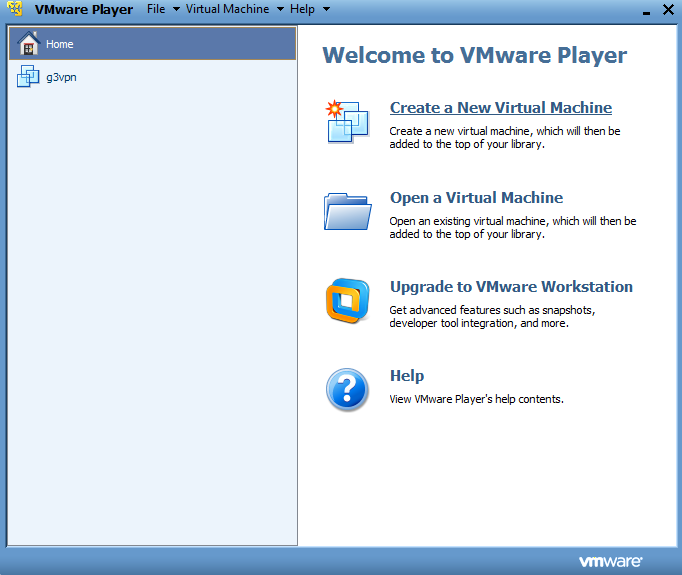

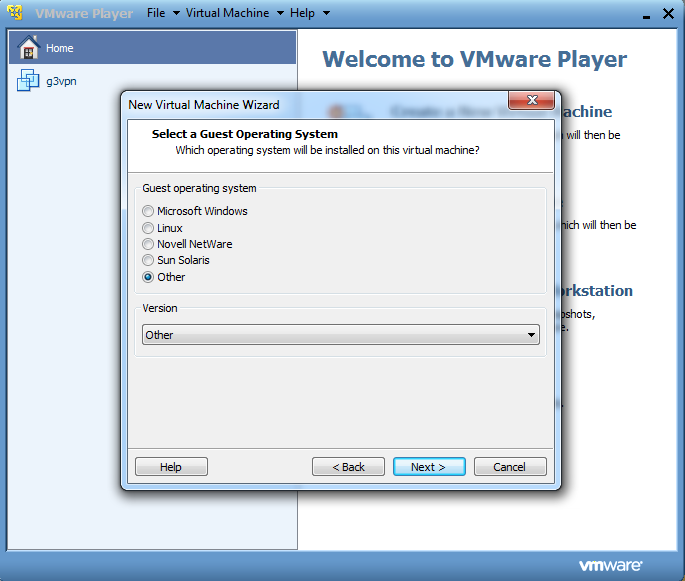
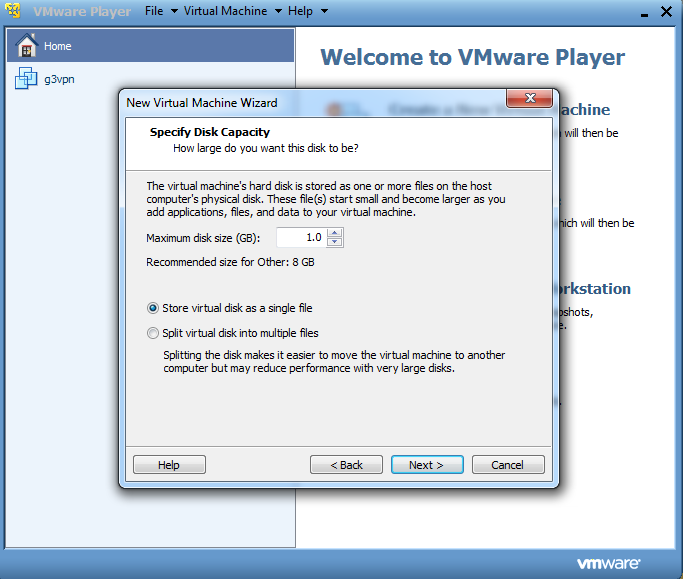

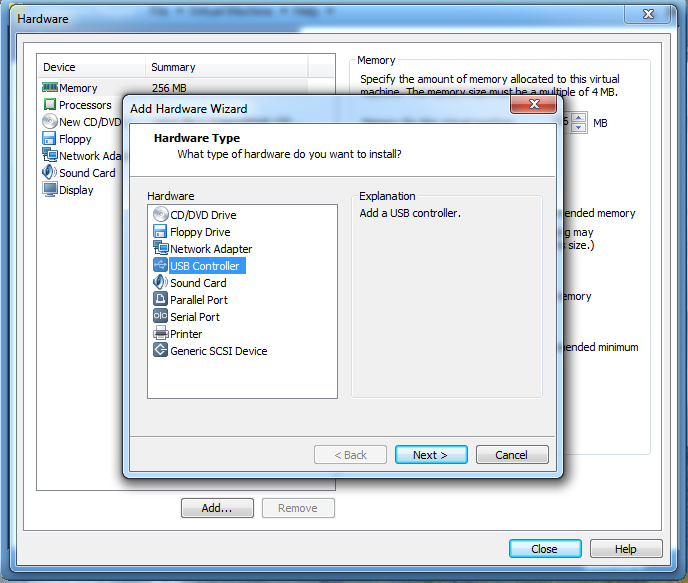
Please e-mail girish@gayatri-hitech.com for anything. This project is available on Amazon for just 49.95$.
You can now purchase a preloaded LiveUSB flashdrive from
 for just 49.95$
for just 49.95$
All updates are tweeted to  https://twitter.com/LiveUSBOpenBSD.
https://twitter.com/LiveUSBOpenBSD.
